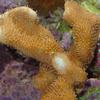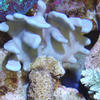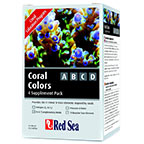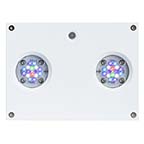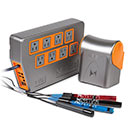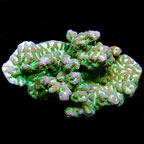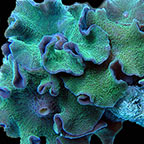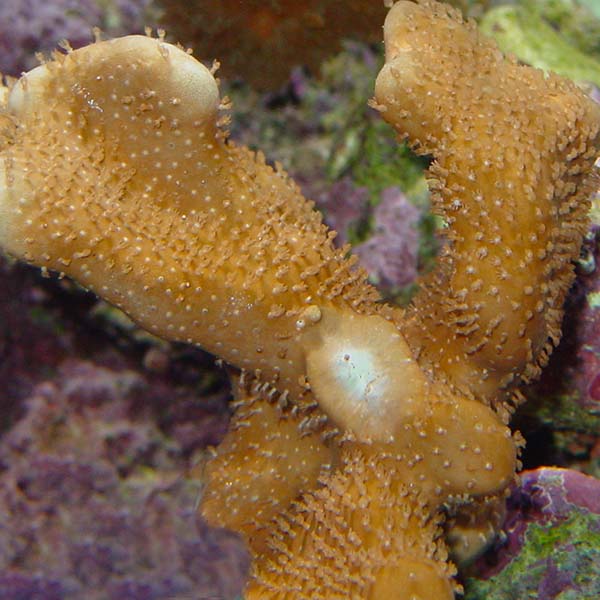
Additional locales and sizes may be available!
Additional locales and sizes may be available! Email me when availableQuick Stats
What do these Quick Stats mean? Click here for more information
What do these Quick Stats mean? Click here for more information
Overview
The Blue Ridge Coral, sometimes referred to as the Blue Coral, is often mistaken for a small polyp stony (SPS) coral because it has a hard blue exoskeleton with long, thin polyps. It really is an octocoral (soft coral) and its growth forms are branching, plate-like, columnar, or encrusting. Its body is composed of calcium carbonate and iron salts, which lend its distinctive blue color. However, the polyps are either brown or light blue. They are an interesting and peacefull coral that will add diversity to your reef aquarium.
The Blue Ridge Coral is generally peaceful towards other corals in the reef aquarium and will do best added to a well-established tank. It requires moderate to high lighting with a medium to strong water current in the aquarium. Calcium, strontium, iodine, and other trace elements will need to be added to the water.
It contains the symbiotic algae zooxanthellae from which it receives the majority of its nutritional requirements through photosynthesis. It does not require additional food to maintain its health in the reef aquarium, but it will feed on micro-plankton or foods designed for filter feeding invertebrates.
Approximate Purchase Size: Small: 1" to 2-1/4"; Medium: 2" to 4-1/4"; Large: 4" to 7"



